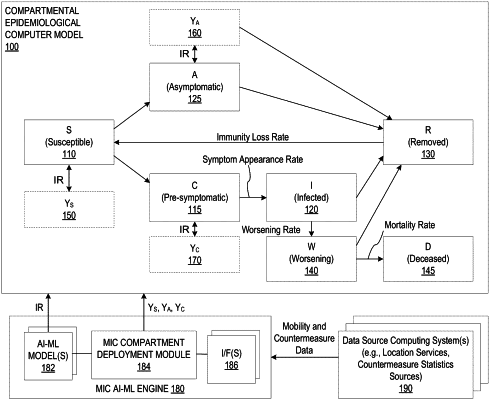| CPC G16H 50/80 (2018.01) [G06N 20/00 (2019.01); G16H 50/50 (2018.01)] | 20 Claims |

|
1. A method, in a data processing system comprising at least one processor and at least one memory coupled to the at least one processor and having instructions executed by the at least one processor to specifically configure the at least one processor to execute the method comprising:
performing machine learning training of an isolation rate prediction AI computer model to generate a trained isolation rate prediction AI model that predicts an isolation rate of a biological population;
receiving isolation data from one or more data source computing systems, wherein the isolation data comprises mobility data providing data indicating a measure of mobility of the biological population;
executing the trained isolation rate prediction AI model on input features extracted from the isolation data to generate a predicted isolation rate;
executing a compartmental epidemiological computer model comprising a plurality of compartments representing states of a population with regard to an infectious disease, to simulate a progression of the infectious disease; and
controlling, during execution of the compartmental epidemiological computer model, a flow of portions of the monitored population from at least one first compartment to at least one second compartment in the compartmental epidemiological computer model based on the predicted isolation rate.
|